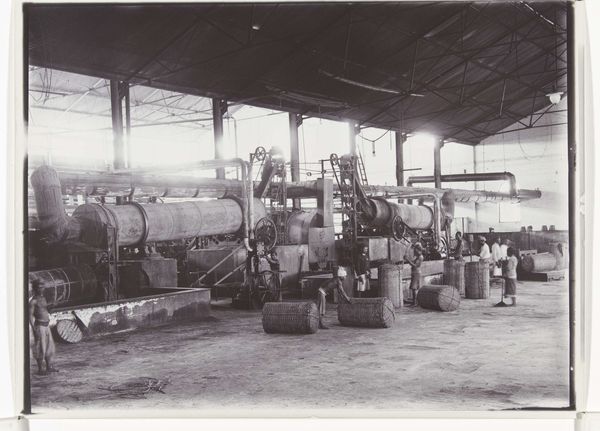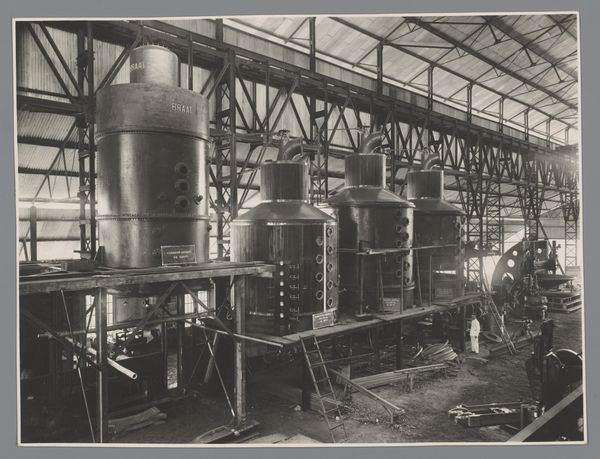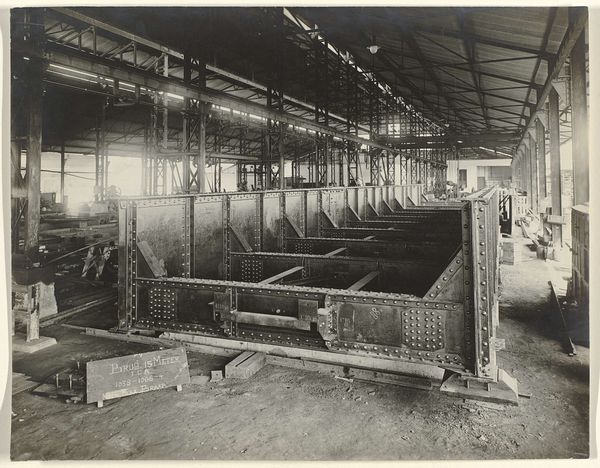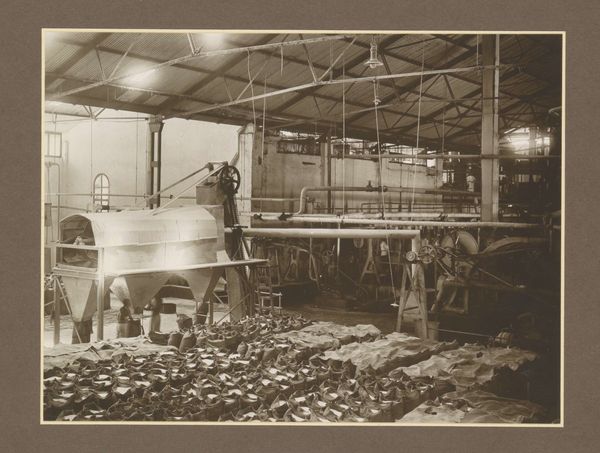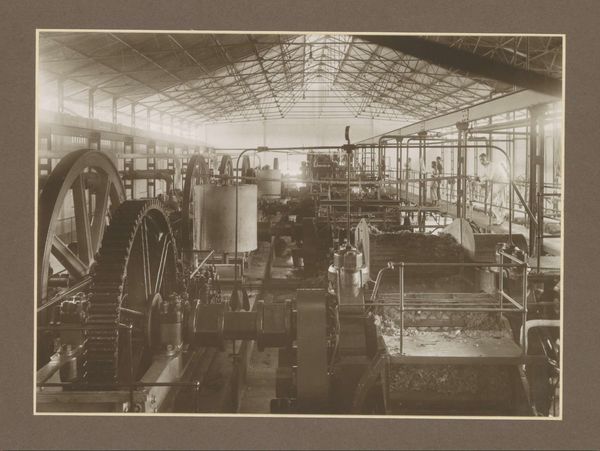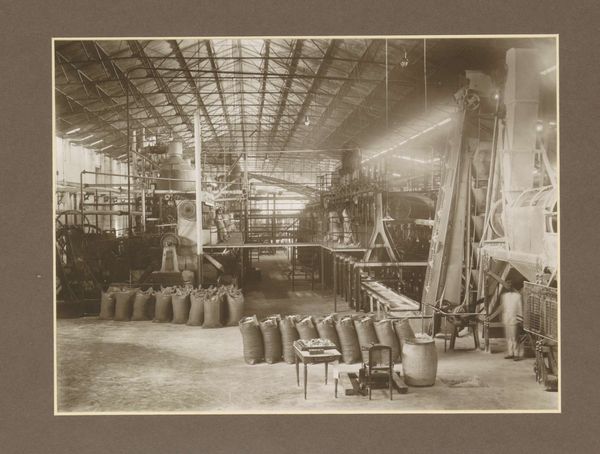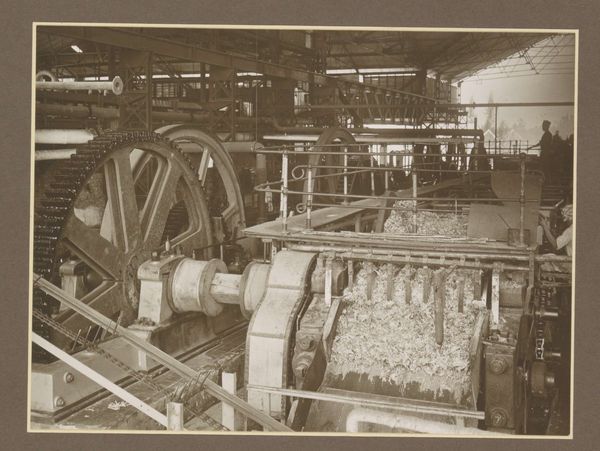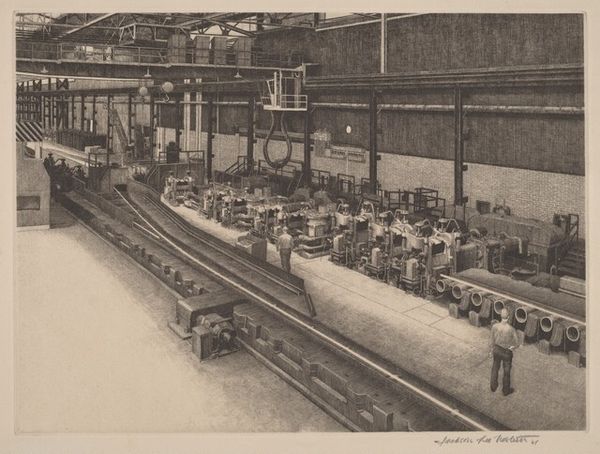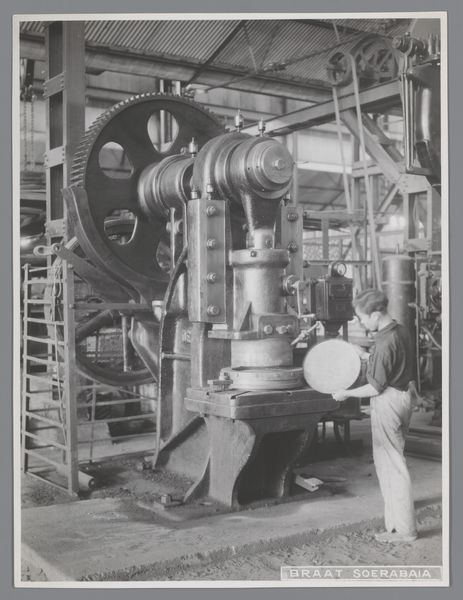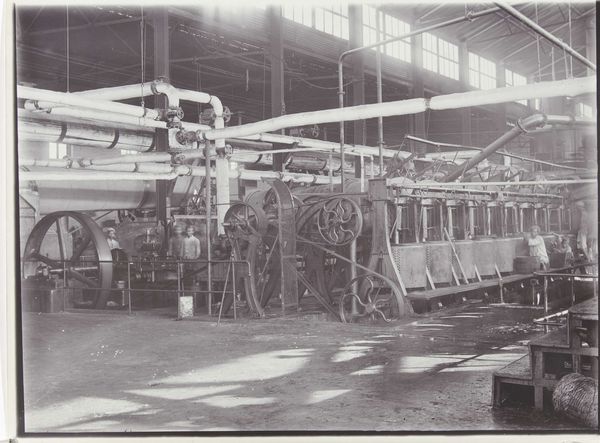
Interieur van de fabriek op de suikeronderneming Nieuw Tersana, Cheribon, voormalig Nederlands-Indië c. 1890 - 1911
0:00
0:00
photography
#
black and white photography
#
landscape
#
archive photography
#
photography
#
monochrome photography
#
genre-painting
Dimensions: height 168 mm, width 226 mm
Copyright: Rijks Museum: Open Domain
Editor: This photograph, "Interieur van de fabriek op de suikeronderneming Nieuw Tersana, Cheribon, voormalig Nederlands-Indië," taken by Onnes Kurkdjian sometime between 1890 and 1911, offers an interesting interior view. The sheer density of material – is it sugar cane? – contrasting with the machinery creates a captivating sense of organized chaos. What stands out to you, and how do you interpret this image through a Formalist lens? Curator: Certainly. Let's observe the interplay of forms. Notice how the geometric precision of the industrial machinery – the cylindrical tanks, the rigorous piping – sharply contrasts with the organic mass of the sugarcane. This deliberate juxtaposition establishes a visual tension, drawing the eye from the structured man-made elements to the raw, unprocessed material. Editor: So the composition is built upon contrasting shapes and textures? Curator: Precisely. The photograph’s value relies heavily on these compositional elements. Further, the lighting, although appearing uniform across the scene, serves to highlight the textures, and that repetitive arrangement of machinery which serves as a structuring mechanism itself, offering a clear and orderly rhythm across the picture plane. What about the tonal range of monochrome itself? Editor: I suppose, even within a restricted palette, we still observe the full spectrum, how the brightest lights give a feeling of being airy and light, contrasting with a lot of shadow areas? And that itself serves a vital aesthetic role. Curator: Indeed. In a sense, the aesthetic success stems directly from this dialogue between darkness and light. Editor: That's a different angle than I first considered; I see the focus is on the formal interactions of the image itself, which constructs the meaning, rather than some narrative it represents. Thank you. Curator: Exactly. Meaning originates in the carefully crafted construction of visual components.
Comments
No comments
Be the first to comment and join the conversation on the ultimate creative platform.
